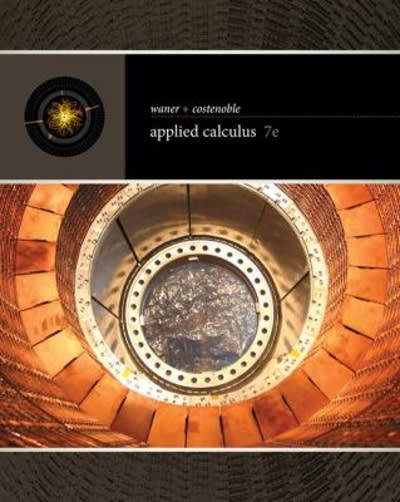Question
TRUE OR FALSE The linear correlation coefficient measures the strength of the linear association between two variables. If the sample size for estimating a population
TRUE OR FALSE
- The linear correlation coefficient measures the strength of the linear association between two variables.
- If the sample size for estimating a population mean increased, the width of the confidence interval will decrease.
- The statement "The weight of an adult individual is 110 pounds" is an example of a point estimate.
- Estimation means assigning values to a population parameter based on the values of a sample statistic.
- For a specific confidence interval, the smaller the sample size, the larger the maximum error of estimate will be.
- Regression line is used to estimate the change iny-variable for a one unit change inx-variable.
- An estimator is consistent if, as the sample size increases, the value of the estimator approaches the value of the parameter.
- The sampling error is the difference between the sample statistic and the population parameter.
- A value used to estimate a population parameter is called a sample statistic.
- An estimator is the sample statistic used to estimate a population parameter.
- Suppose we want to find the confidence interval for a population mean. If the level of confidence is increased, say 95% to 99%, the width of the interval will also increase.
- The value of the correlation is reported by a researcher to ber=0.4. This implies that thex-variable explains 20% of the variability in they-variable.
- A good estimator is one that is unbiased, consistent and relatively efficient.
- The three confidence intervals which are often used are 99%, 95% and 90%.
- A magazine for vehicle reported that the correlation between vehicle weight and vehicle reliability is -0.45. This suggests that heavier vehicle tend to be less reliable.
- Point estimates are preferred over interval estimates since a confidence interval can be specified.
- An interval estimate always contains the population parameter.
- A sample coefficient of correlation can range from -1.00 to 1.00.
- Maximum error of estimate is the minimum difference between the point estimate of a parameter and the actual value of the parameter.
- The value of a sample statistic is referred as the point estimate of the corresponding population parameter.
CHOOSE THE ANSWER BELOW.
a. positive correlation b. negative correlation c. no correlation
- Cholesterol level and incidence of coronary heart disease.
- IQ level and Grade Point Average.
- Number of campaign materials used by marketing representatives and level of awareness of customers.
- Number of television commercials and sales of its product.
- Board Exam performance and eating habits.
- Amount of time spent studying and final exam scores.
- Income and expenditure.
- Mileage a vehicle has been driven and selling price.
- Outside temperature and ice cream sales.
- Income and educational attainment.
In correlation analysis
a. we study the difference between two variables
b. we consider the intercept with thex-axis
c. we study the strength of relationship between two variables
The relationship between dependent and independent variables represented by the linear regression (simple) is
a parabola
B. curve
C. straight line
Which value of correlation coefficient indicates a stronger correlation than -0.60?
A. 0.45
B. 0.65
C. -0.40
D. 0
The variable used as the estimator is referred as
A. dependent variable
B. correlation coefficient
C. regression line
D. independent variable
A simple linear regression is a regression model that contains
A. one independent variable
B. one independent variable and one dependent variable
C. one dependent variable
Step by Step Solution
There are 3 Steps involved in it
Step: 1

Get Instant Access to Expert-Tailored Solutions
See step-by-step solutions with expert insights and AI powered tools for academic success
Step: 2

Step: 3

Ace Your Homework with AI
Get the answers you need in no time with our AI-driven, step-by-step assistance
Get Started


